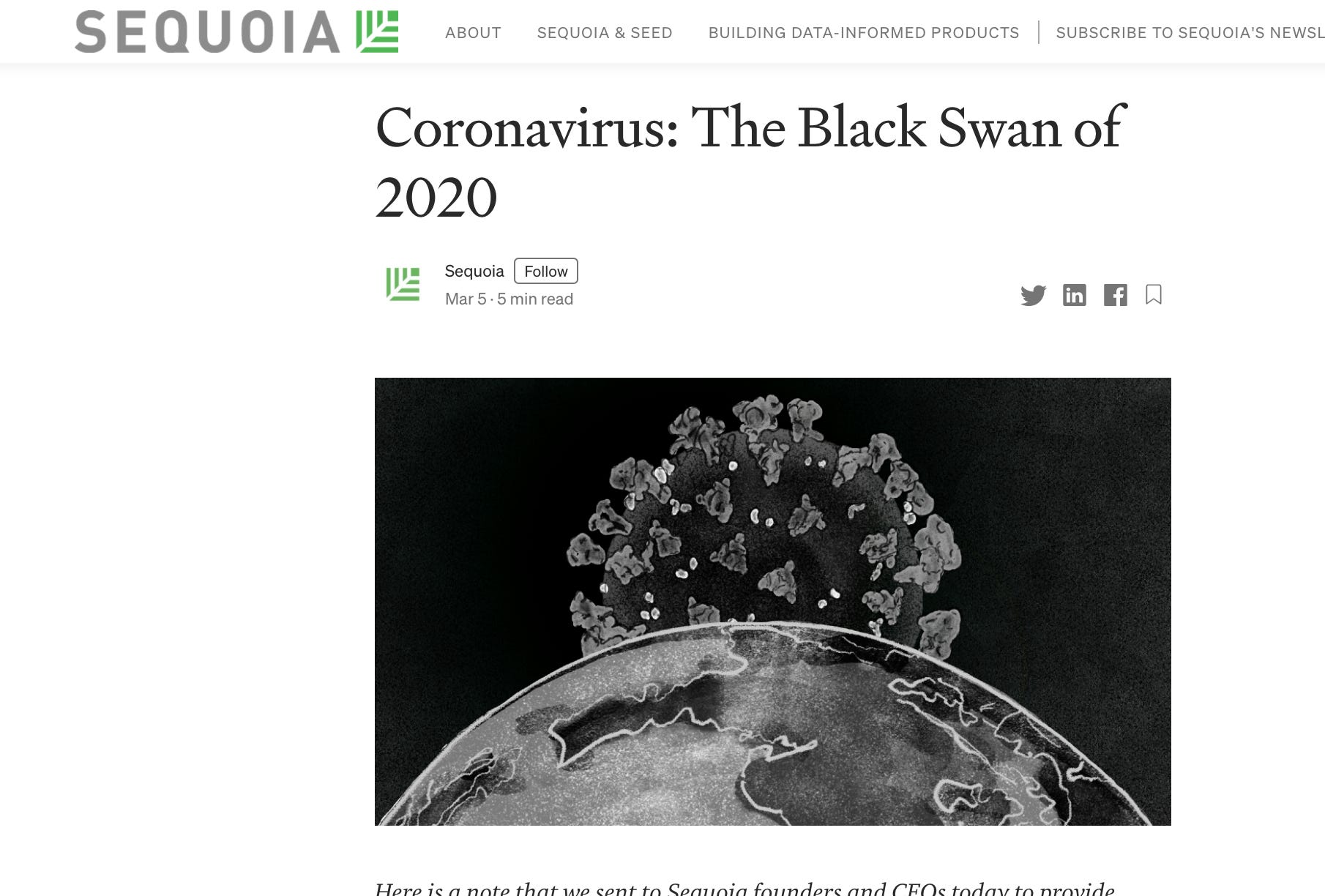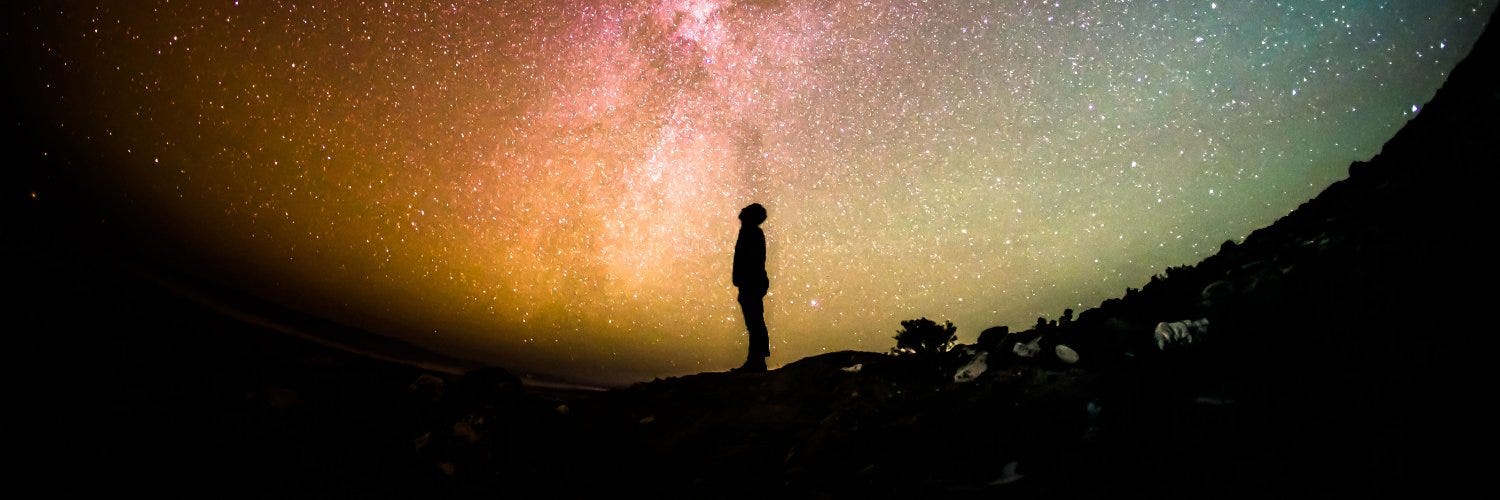COVID-19 has shocked the world, in more ways than one. Many have died. Many have lost jobs. Many have suffered from depression or divorce from all the time spent indoors. At the same time, many have thrived. Although some markets were wrecked by COVID, many were lifted up. Many of us saved money on gas and spent more time with family. And for a lot of people, specifically those outside of tech hubs, we got a glimpse into what it was like to be at the center of tech, just by opening up our computers. SF’s culture has been bare naked to the whole world for the last nine months.
How did we get here?
Because COVID happened so suddenly and the perceived risk was high, remote was thrust onto the whole workforce, including the tech sector. For many in the Bay Area, this sounded like a death sentence to innovation. Investors warned their portfolio companies to cut staff and quickly reduce burn. LP’s capital was expected to stop flowing, cutting off funding to VC, and then to startups. Sequoia even published a blog post sounding the alarm. 2020 was supposed to be a bad, bad year, because business was not going to be “as usual”.
Yet here I sit, in December of 2020, and it seemed like this was a record year by many accounts. The early-stage funding environment was flush with capital with hundreds of new funds being created + new fund structures were enabled by Angelist, and the SEC started to make much needed progress on changing the accredited investor laws. A few days ago, the Forbes 30 under 30 was published, while a few months ago, YC put on a spectacular remote demo day, and things almost felt….better?
It sounds weird saying this, but from my perspective, COVID has brought out more innovation than the world has seen in decades. Remote startup life works, in more ways than one. Checks are being cut, employees hired (and fired), and board meetings are happening, all remotely.
We all know, in a different reality, none of this should be happening. No one thought this could be possible, or at least, a critical mass didn’t think this was possible. Yet, we sit here at the end of 2020, looking at what happens when COVID forced our reality to bend a certain way. All I can say is wow, what an experiment. In many ways, it was a hard fork.
Why Was 2020 So Alive (and Dead ) at the Same Time?
It’s up to interpretation why innovation has boomed this year. Is it booming because COVID created grounds to innovate? Or is it because, for one year, innovation was borderless? I’d argue it’s more of the latter. Three months into the pandemic, business was arguably going on as usual in the Bay Area; It was just happening in the cloud. Everything was about the same.. except for one key difference; anyone in the world could partake in the Silicon Valley ecosystem. In the early pandemic, Josh Constine and Hunter Walk, two prolific SF VCs, set up open hang out sessions that anyone could join.
Twitter felt like South Park, with drama and gossip flowing like we were sitting right next to the good and bad actors drinking a cold brew at the nearest Blue Bottle. And Zoom felt like the coffee table, but at a coffeeshop that billions of people now had access to. All of a sudden, a 3,000-mile plane ride turned into a DM and a room link. The world, if only for a second, became much, much smaller…or larger. Either way, it was connected in a way it had never been connected previously. I know many people that are located outside of the Bay Area that took advantage of this, that raised millions in venture capital, hired Silicon Valley talent, and got Silicon Valley advisors…all without even leaving their bedrooms!
For a moment in time, it didn’t matter if you were a drive away from your VC. In 2020, no one was a drive away, even if they were next-door neighbors. You could argue that the playing field has leveled significantly. The founder pool and talent pool increased tremendously. Business thrived because of it. Unfortunately, I don’t think this is “how things will work” moving forward.
Things Will Go Back To How They Used To Be
My prediction is that the vaccine will be introduced, the world will slowly go back to normal, as will SF and the Bay Area. They are probably really excited about this, because they want the coffee-shop meetings back. They want the late-night dinner parties at Fogo De Chao and the in-person pitch meetings on Sand Hill Road. Hell, we all wish we were back in person again. No one can argue against that.
The issue is that once we are all back in person, the 2020 branch will have merged back into the “way things used to work”, because the Bay Area has an incentive to keep the magic constrained to that special small stretch of land in Northern California. All of a sudden, investors won’t be as willing to do Zoom meetings. And people won’t be doing their public events on Twitter or Hopin. Conferences will cost $1,500 again, and the test flight betas will spread in person, not on Twitter, leaving the rest of the world high and dry. I worry that when things go back to normal, everything will go back to normal. The hard fork may as well never have existed in the first place.
I feel like we have an obligation to see through what COVID started, and further explore what is possible when you have a world that doesn’t matter where you live. We just can’t go back to a world where we pretend like 2020 didn’t exist, when we all know the magic that occurred online this year.
The City COVID Created
To make sure things don’t go back to the way they used to be, I decided to start a virtual city back in August, called Forward Thinking City. At first, I picked the city theme because I thought it was fun and easily brandable. But over time, I’ve really taken a liking to the concept of truly building a space for people working on things, virtually. Building a virtual Philz. An internet native Sand Hill Road. A cloud Embarcadero. It sounds funny to talk about, but COVID showed us that doing business online isn’t just fun; it’s better. And once the vaccine is here, this way will be forgotten unless s group of people doesn’t take the tunnel that the hard fork forged, and keeps exploring with a torch, an imagination, and the internet.
Can you build a city on the internet? Can you create a serendipitous environment where people with different ambitions can come together and make something magical? I don’t know, but I speak for billions of innovators, investors and investors that are based outside of the Valley; We want a piece of the formula that has made founders and investors hundreds of billions of dollars in SF. All we need to do is keep walking down the path that COVID carved out for us. I think that we’ll find on the other side a more equitable, better, and more innovative global startup community, capable of 100x more than what one physical geography is capable of.
If you liked this post, consider joining the best internet city for startup founders, investors, and tech enthusiasts for $20/mo, Forward Thinking City.





